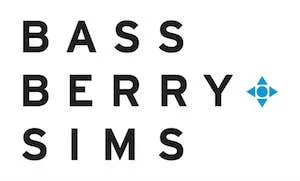- with readers working within the Pharmaceuticals & BioTech industries
- within Coronavirus (COVID-19) topic(s)
In October, the U.S. Small Business Administration (SBA) published a final rule entitled "Consolidation of Mentor-Protégé Programs and Other Government Contracting Amendments," which went into effect on November 16, 2020. This final rule merges two existing mentor-protégé programs, revises SBA's affiliation rules, and makes other technical changes to clarify SBA's size requirements for contractors. Contractors of all sizes should review this sweeping final rule for any changes that may impact them. Here, we present some of the most significant changes this final rule implements.
Merger of SBA's 8(a) Mentor-Protégé Program into the All-Small Mentor-Protégé Program
SBA's first mentor-protégé program was created in 1998 solely for 8(a) small businesses. The goal of the program was to pair SBA-approved experienced businesses (mentors) with SBA-approved 8(a) small businesses (protégés) to help them develop. Mentors and protégés were able to form joint ventures to compete for contracts and, importantly, were not subject to SBA's affiliation rules. This affiliation exception is important because SBA's regulations require a small business to count its annual receipts or employees, plus the annual receipts or employees of each affiliate when determining its size status. Waiving this requirement for mentors and protégés allowed them to be awarded contracts they might have otherwise been ineligible for because of affiliation rules.
In October 2016, SBA created the All-Small Mentor-Protégé Program (ASMPP) to expand the mentor-protégé program beyond 8(a) small businesses to include all small businesses, including women-owned small businesses, service-disabled veteran-owned small businesses, and Historically Under-Utilized Business Zone small businesses. The ASMPP program possessed similar benefits as SBA's 8(a) mentor-protégé program, including the ability to form joint ventures and the exception to affiliation rules. The ASMPP has been very popular, with more than 1,200 active mentor-protégé agreements currently in existence under the program. Because of ASMPP's success and the overlap that exists between ASMPP and SBA's 8(a) mentor-protégé program, the final rule eliminated the 8(a) mentor-protégé program and merged it into ASMPP in its latest final rule.
As a result of this merger, the 8(a) mentor-protégé program's pre-approval requirement for joint venture agreements before the award of an 8(a) contract has been dropped. Now, mentors and protégés can form joint ventures and bid on contracts without first seeking approval for the joint venture agreement from SBA. 13 C.F.R. § 124.513(e). However, mentors and protégés must still get initial approval to form a mentor-protégé relationship. 13 C.F.R. § 125.8-125.9. Parties with a mentor-protégé agreement previously approved under the 8(a) program will continue to operate as an SBA-approved mentor-protégé agreement under ASMPP.
Clarification on Unpopulated Joint Venture Rules
In 2016, SBA's rules eliminated "populated" joint ventures, which meant that joint ventures could not be "populated" by employees hired solely to perform contracts awarded to joint ventures. While a joint venture could hire employees to perform purely administrative functions, it could "not have its own separate employees . . . perform contracts awarded to the joint venture." 13 C.F.R. § 121.103(h). It remained unclear, however, if joint ventures were allowed to hire a facility security officer (FSO) for security clearance purposes. Additionally, agencies have sometimes been reluctant to award contracts requiring facility clearance to joint ventures, even if the parties to the joint venture both have individual security clearances.
SBA's final rule confirms that joint ventures may employ an FSO and still be in compliance with the "unpopulated" requirements as long as that FSO is not an employee intended to perform contracts awarded to the joint venture. 85 Fed. Reg. 66149 & 66180. Further, the SBA added language to 13 C.F.R. § 121.103(h)(4) confirming that "a joint venture may be awarded a contract requiring a facility security clearance where either the joint venture itself or the individual partner(s) to the joint venture that will perform the necessary security work has (have) a facility security clearance."
The amendment further confirms that "[w]here a facility security clearance is required to perform primary and vital requirements of a contract, the lead small business partner to the joint venture must possess the required facility security clearance," and "[w]here the security portion of the contract requiring a facility security clearance is ancillary to the principal purpose of the procurement, the partner to the joint venture that will perform that work must possess the required facility security clearance." 13 C.F.R. § 121.103(h)(4).
Additional Important Changes in SBA's Final Rule
- Three-in-Two Rule Change: Before the promulgation of this final rule, joint ventures were limited to being awarded three contracts in two years. The final rule eliminates the maximum of three contracts. Now, joint ventures can be awarded an unlimited amount of contracts for two years. After two years, the joint venture is then considered a separate business concern, with its joint venture members becoming affiliates for size purposes, even if they are both small businesses or a mentor-protégé team. 85 Fed. Reg. 66148 & 66179.
- Recertification Requirements When a Joint Venture Member Is Acquired: Before the final rule, when a joint venture member was acquired or merged, it was unclear if every member of the joint venture needed to recertify as to its size or if that only applied to the acquiring or merged member. The final rule clarifies that when one joint venture member undergoes a merger or acquisition, only that member must recertify its size for the joint venture to then recertify its size. 85 Fed. Reg. 66153 & 66180-66182. By limiting recertification to acquired or merged members, joint venture members who were initially compliant with SBA's size requirement but have naturally grown larger over the life of a contract without experiencing an acquisition or merger can avoid recertification and remain compliant with the contract.
- Size Determined When Final Proposal Revisions Are Submitted: The final rule states that the size of contractors is determined at the time when final proposal revisions are submitted, rather than when the initial proposal was submitted. This prevents contractors from making changes after initial proposals are submitted but pre-award that which would render the contractor non-compliant with SBA's size requirements. This also means that a contractor who is non-compliant when its initial proposal is submitted has an opportunity to cure size issues before its final proposal revisions are submitted.
- Capabilities and Past Performance of First-Tier Subcontractors: The final rule now requires agencies to consider the certifications, qualifications, capabilities, and past performance of first-tier subcontractors that a small business offeror identifies in its proposal if the small business's capabilities and past performance are not independently strong enough to justify the award of a contract.
- Affiliation Through Economic Dependence: The SBA has clarified the rule on affiliation through economic dependence. The rule retains the general presumption of affiliation where a contractor derives more than 70% of its revenue from an alleged affiliate over the previous three fiscal years, but specifically allows a contractor to rebut the presumption by showing "that despite the contractual relations with another concern, the concern at issue is not solely dependent on that other concern."
The content of this article is intended to provide a general guide to the subject matter. Specialist advice should be sought about your specific circumstances.


